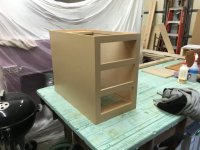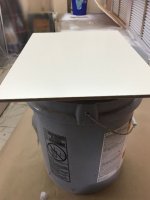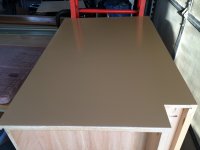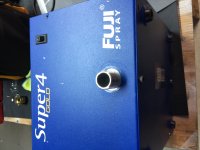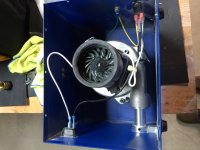tjbnwi
Member
- Joined
- May 12, 2008
- Messages
- 7,266
wptski said:This is a war or a choice of words.tjbnwi said:Again, I apply the word bleeding to a closed system, purging to an open system.
That return line wasn't used and was plugged on the backpack tank. It then became a generic pressure pot. I'd start the battery pump only, pull the trigger and the material travels up the line. When the material reaches the fitting on the Fiji gun, I start the turbine and a second later test the pattern.tjbnwi said:Your backpack rigged to the Fuji----where did you connect the backpack return line on the Fuji gun? There is no device on the Fuji to allow you to to prime/bleed the Fuji. So how did you make it work with the Fuji gun? (these are rhetorical questions)
If one doesn't press the trigger, you are trying to force liquid into a closed line or system, correct? Does pressing the trigger make it an open system? By pressing the trigger, you allow air to be forced out, correct? I'm avoiding to use of bleed or purge, our problem terms here.
The backpack---is the pump a small air compressor that pressurizes the tank or a fluid transfer pump that pressurizes the fluid that enters it to move it down line?
Was the return line in use when spraying or just when you primed the pump?
(I've never seen or used the backpack, curious as to how it functions)
Not trying to do anything, just making the system ready for use.
It's an open system, the system is designed to have the product/fluid exit the system. A closed system is designed so the product/fluid des not leave the system durning normal use.
Tom


